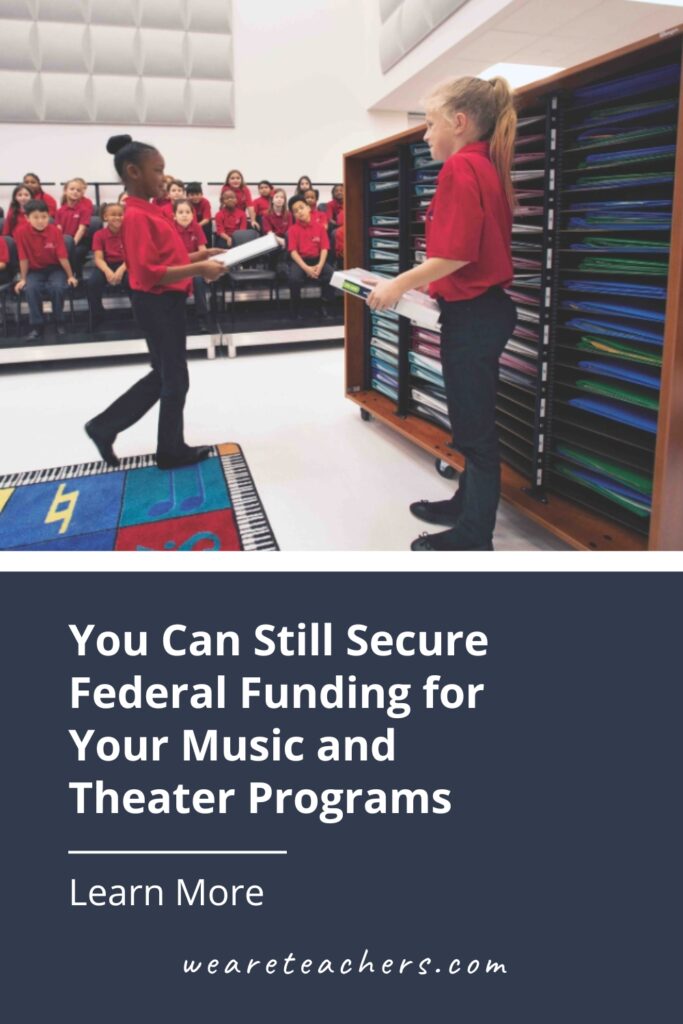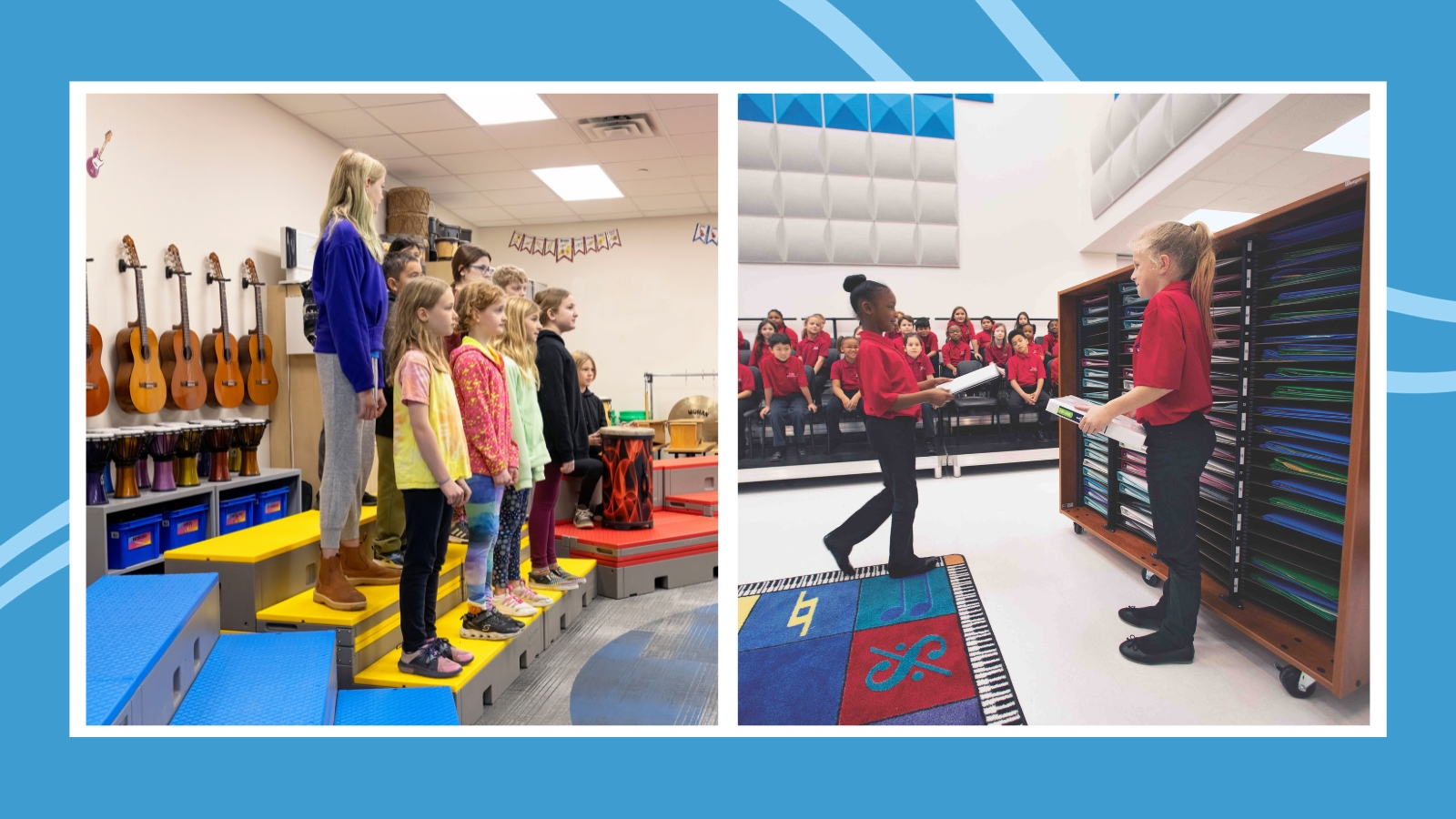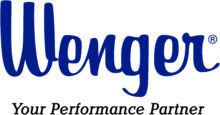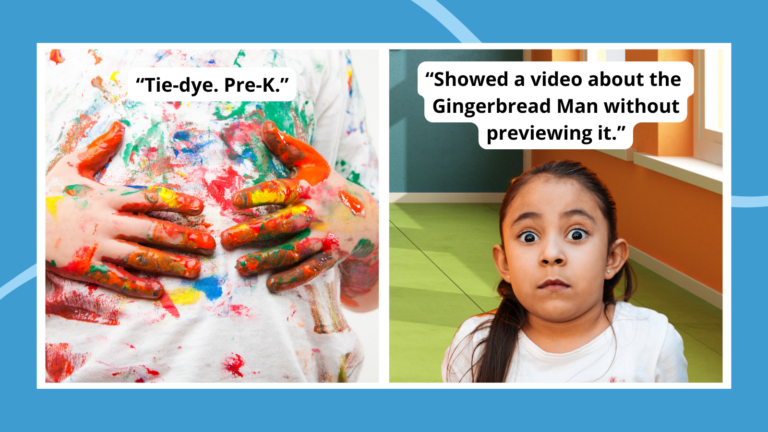When school budgets are being decided, it often seems like the purchases for music and the arts get shuffled around and skimmed away until there’s not much left for the bigger-budget items (or even some of the smaller items!) we’d like to use with our students. To make up for these shortages, music and performing arts teachers, like so many other educators, often end up funding our classrooms with our own money. It’s far from ideal. Fortunately, there is a way to get funding for our classrooms and performance spaces without impacting district budgets. States and school districts are still allocating their ESSER ARP funds through September of 2024, and they can be used to fund furnishings and equipment for music and theater classrooms.
What are ESSER funds?
Put simply, in 2020, the U.S. Congress passed a $2.2 trillion economic stimulus bill in response to the economic repercussions of the COVID pandemic. Part of that bill, called the Elementary and Secondary School Emergency Relief (ESSER) Fund, designated money specifically for schools. There are three stages of ESSER fund dispersal that can be used to purchase equipment and supplies, COVID-19 mitigation, or provide support for student needs.
Some of the ESSER funds, specifically ESSER III funds, must be used to address learning loss through evidence-based interventions that respond to students’ academic, social, and emotional needs. And that’s where music and performing arts classrooms can benefit from this funding the most.
What does that mean for performing arts classrooms?
The performing arts support the social and emotional well-being of students, whether through distance learning or in person. Therefore, performing arts–related activities may be eligible for support under this umbrella. ESSER funds are available to schools to make any purchase that will enhance student learning and educational development. In other words, this can include equipment or technology that is often too expensive to be included in a normal year’s budget. Each state has prioritized certain areas of spending, and music education fits into most of these plans.
Take stock of your classroom or performance space.
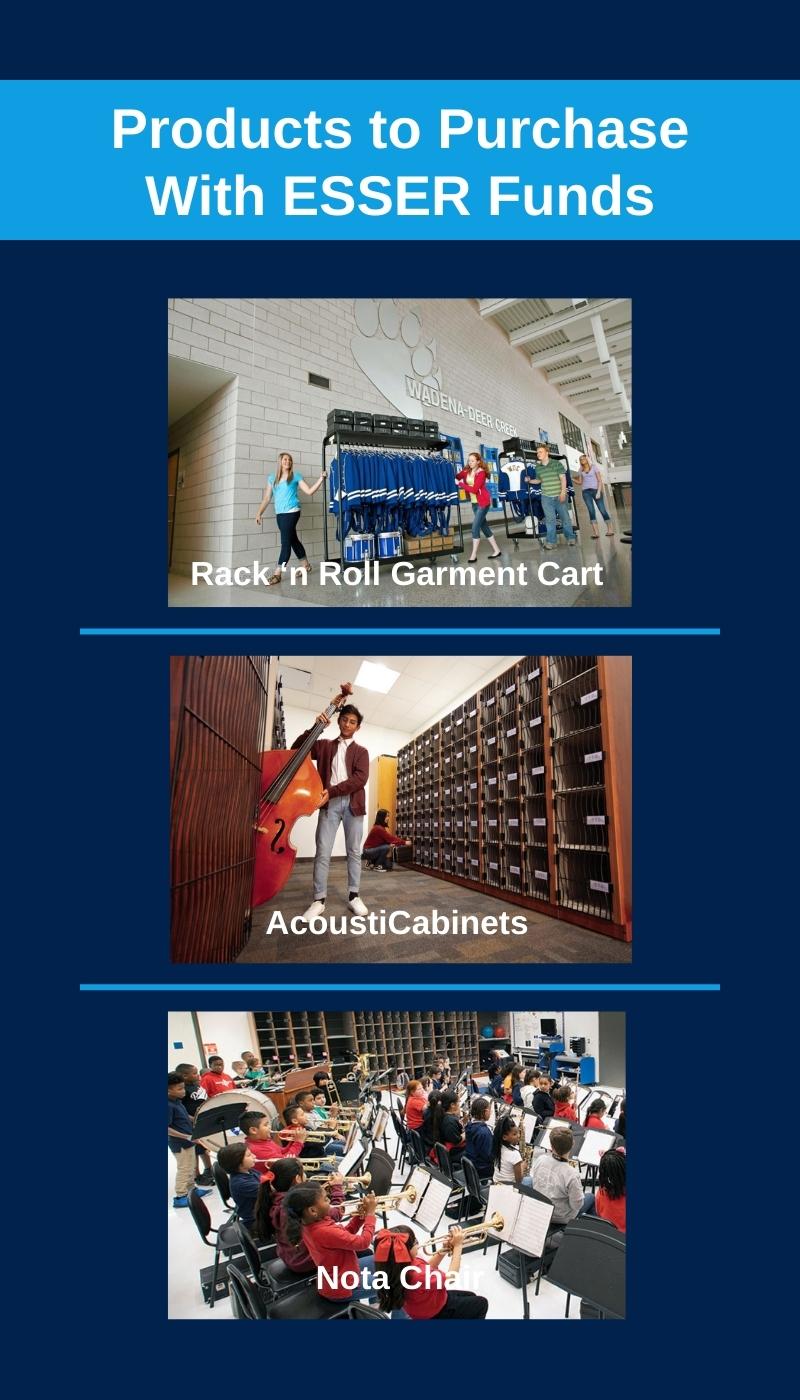
What would make your classroom a more accessible, more enriching environment for your students? You might be surprised at what types of supplies or resources might be available for purchase using ESSER funds. Some examples include:
- Auxiliary instruments for the band or orchestra
- Notation or drill writing software
- Music and instrument storage options
- Instrument repair and supplies
- Choral risers
- General music percussion
- Movement manipulatives
- Sound and lighting equipment
I don’t know about you, but I have a few music stands that wobble if you exhale too hard and a few trombones that are certainly due for an upgrade!
Once you’ve made your list, request a meeting.
Determine who oversees your district’s ESSER funds requests. Depending on your district, this could be your principal, district grants office, or federal programs manager. Ask for a meeting. Be prepared to present a detailed list of equipment needs based on your assessment of your classroom or program. It can be wise to include your department chair or another administrator at this meeting. That way, you have an ally who is familiar and involved with your program. They can serve as an advocate and reinforce your proposal. Every state and district should have a publicly posted plan detailing how they will spend these funds and how schools can access them.
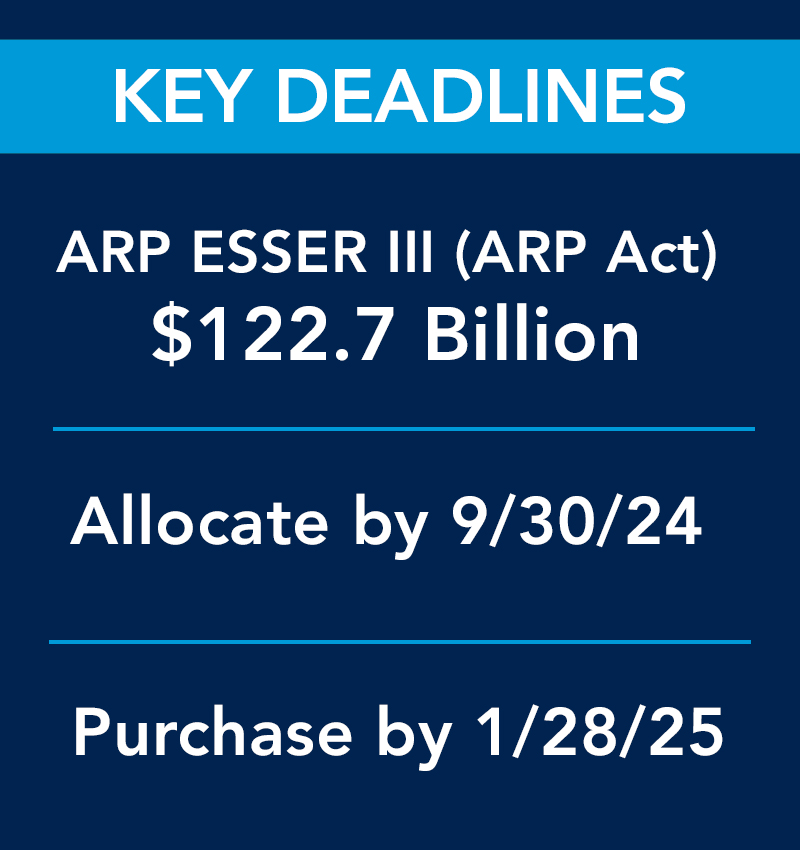
Prepare for questions.
Be prepared to justify why you and your students need these funds allocated to them. Think safety, learning enhancement, program growth, summer learning, and how funds will help address learning loss. Additionally, bring general quotes for what you are proposing to be purchased. Some districts require competing quotes. The only way to access these funds is to ask, so it makes sense to start big. There’s nothing wrong with asking for everything you could possibly want, but also have alternative, pared-down lists ready. In short, come prepared with more information than you think you will actually need.
Don’t be discouraged by an initial “no.”
It can be daunting to have a request refused, but don’t give up. One “no” doesn’t mean that funding isn’t possible. Ask the person in charge of funding for what you need to revise or retool in order to re-apply. ESSER funding is being distributed through September 2024, so persistence counts!
Looking for resources, supplies, or support as you apply for ESSER funds? The folks at Wenger Corporation will help you through the process.
